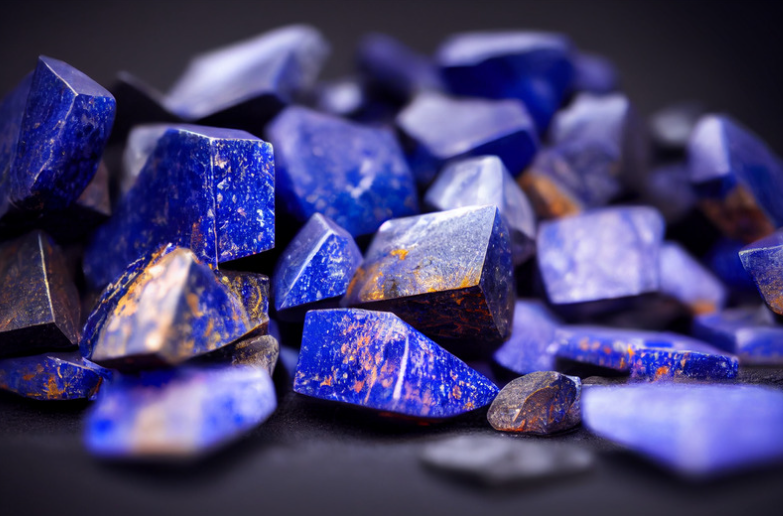
Lapis Lazuli & the Ancients
Share
For just a moment, pretend you’re riding a merchant caravan crossing the ancient Iranian civilization called Bactria. You’re travelling down a valley road with enormous mountains looming on either side. It could be horses or camels pulling the caravan; whatever the case, they kick up plumes of dust as they go. A hawk soars overhead in an unbroken sky. You are on your way to a great city of the ancients, perhaps in Greece, India, Egypt, Rome, Persia, China, or Mesopotamia. Why? Because your caravan holds a precious cargo—one of brilliant blue.

Historians believe humans have revered lapis lazuli for more than 6,500 years. This gem—a combination of lazurite, pyrite, and calcite—was highly valuable to many ancient civilizations. Such peoples prized it as much as (and sometimes even more than) other blue gemstones like sapphire and turquoise.
To mine lapis lazuli, one must journey to Badakshan, a province in present-day Afghanistan. The lapis mines here are the world’s oldest known commercial gemstone source, and their surrounding environment remains virtually the same as it was in 700 BC. Badakshan is a mountainous wasteland with sheer cliffs that rise to 17,000 feet. Instead of vegetation, this place is home to dangerous ravines and harsh conditions. So inhospitable is this region that very few outsiders have been to it. Indeed, there is only one reason to go here: to seek the azure treasure that hides within the craggy rock.

Despite the treacherous environment where the mines dwell, human beings have returned there again and again for thousands of years. Throughout history, lapis has been used in jewelry, carvings, bowls, dagger handles, hair combs, amulets, and countless other applications. It was even used in paint; by the end of the Middle Ages, lapis lazuli was imported into Western Europe and ground into powder to create the pigment called ultramarine.
Speaking of the stone’s infamous blue color, we must touch upon the etymological root of its name. Lapis lazuli’s original Persian name was lāžward, which is the source of the Medieval Latin word lazulum, meaning “heaven” or “sky.” So the name lapis lazuli literally means “stone of lazulum,” and has been in use since the days of Middle English. (In fact, because lazulum is etymologically related to the color blue, it is the root for the word for “blue” in several different languages, including azul in Spanish and Portuguese.)
 Metaphysically, blue stones are often associated with communication and self-expression, being related to the throat chakra and the element of air. With lapis lazuli being so vibrantly blue, it is certainly no exception. But I also associate the stone with the ancient civilizations of humans and the lost wisdom of those peoples. For instance, I think of the ancient Egyptians and their impossibly enormous pyramids. I feel as though the piece of lapis I’m holding connects me to those ancients in some way, however remote. It draws forth the very roots of humanity for all of us to remember.
Metaphysically, blue stones are often associated with communication and self-expression, being related to the throat chakra and the element of air. With lapis lazuli being so vibrantly blue, it is certainly no exception. But I also associate the stone with the ancient civilizations of humans and the lost wisdom of those peoples. For instance, I think of the ancient Egyptians and their impossibly enormous pyramids. I feel as though the piece of lapis I’m holding connects me to those ancients in some way, however remote. It draws forth the very roots of humanity for all of us to remember.
~~~
by Amber N. 2025
